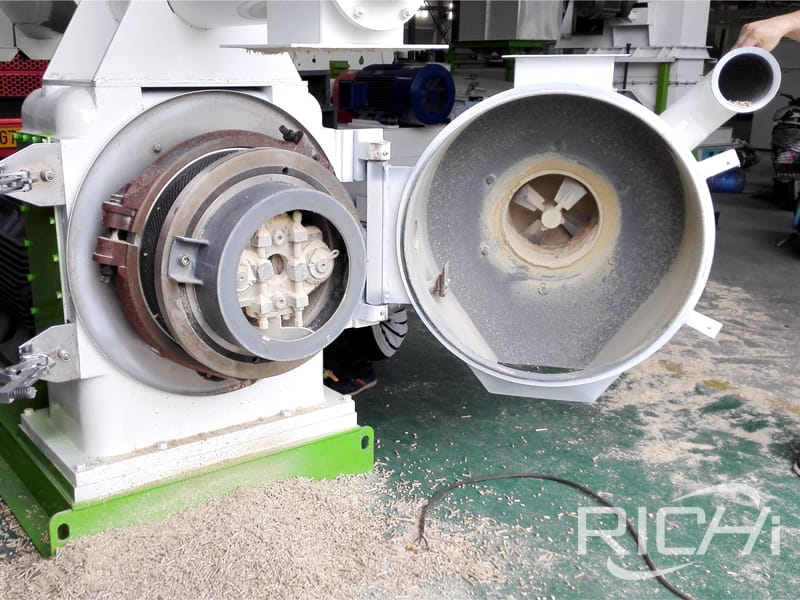Pellet granulator machine, especially for wood and biomass, we usually give it a lot of names, such as wood pellet mill equipment,bioenergy wood pellet mill,corn stalk pellet mill,pine wood pellet mill,organic fertilizer pellet mill,peanut shell pellet mill,soybeans husk pellet mill,etc.It can be seen that these are granulators with different raw materials. These are just different names, and pellet press granulators are "universal" and can use a variety of raw materials. Because everyone calls this equipment according to their actual use of the granulator. Common granulator pellet raw materials are straw, corn stalks, wheat straw, straw, peanut hulls, corn cobs, cotton stalks, soybean stalks, weeds, branches, leaves, sawdust, bark, organic fertilizer, etc. Special materials like fiber, marijuana. Here are some examples to see:

One of the foremost cosideration before starting your pellet press granulators to make pellets is the materials. Generally, several factors of the raw materials need to be condiderated, namly, are, the availability, inflammability, adhesiveness and the calorific value. The availability of the raw materials decides the capacity and stability of the pellet production.The inflammability is one of the factors decides the feasibility of pellet production Another important characteristic is adhesiveness ,that's, its ability to bond together, when compressed by the pellet press machines. The calorific value of the pellets is depended on the selection of raw materials. However, almost any sort of vegetation can be condensed into energy producing pellets although each has its own unique characteristics.
1.Wood
The most common sources of material for the manufacture of wood pellets are the by-products of primary wood processing at sawmills and plywood plants: bark, sawdust, woodchips and shavings. These materials are superior for the pelletization process in that fewer processing steps are necessary before entering the pellet mill.
2.Agricultural waste
In locations without large-scale forestry operations the focus has been on the conversion of agricultural waste—notably straw—into biomass energy. This is due to its relative abundance and fast rate of rejuvenation. In Europe alone, it is estimated that an estimated 23 million dry tons is produced annually—double the weight of its current pellet demand. Denmark has been one of the leading countries in converting this agricultural product into energy.
3.Reed canary grass
Reed canary grass is harvested annually in spring. Its dry yield varies between 5 to 12 tons per hectare with a moisture content of between 10 and 15 percent. The plant is advantageous in that it can grow in the same location for several years without the need for rotation, and does so without the need of extensive amounts of water and fertilizer. Harvested reed canary grass is baled for more convenient transport, although the baled straw must be stored in a way to avoid gathering moisture.
4.Miscanthus
Miscanthus can exceed heights of 3.5 meters in a single growing season. Its rapid growth, low mineral content and high biomass yield make miscanthus a viable source of biofuel. Additionally, the plant exhibits greater photosynthetic efficiency and lower water use requirements than other plants. Miscanthus has low nutritional requirements and is highly efficient in the processing of nitrogen. These properties allow the plant to grow on barren land without the need for heavy fertilization. Miscanthus has the potential to yield 15-25 metric tons per hectare, dry weight, on an annual basis. Upon harvest it can be converted into biofuel products such as pellets.
5.Switchgrass
Switchgrass is another option for pelletization, although at a yield of only 7-11 metric tons per hectare it is outperformed by miscanthus. This grass is also called “elephant grass,” and grows in the prairies of North America.
6.Cardoon
Cardoon is another herbaceous species that has been identified as a feasible energy crop for countries in southern Europe. Its dry yield varies between 3-11 metric tons per hectare. Cardoon grows in areas with limited rainfall. Although the plant’s calorific value is high at 15 megajoules per kilogram its 13.9 percent ash content is comparatively high. The greatest potential for cardoon may be as a supplement to other biomass sources to make blended biofuel.
7.Olive and rapeseed
Olive pits may be recovered as a by-product in the production of olive oil. These then compete with pellets as a source of biomass energy in domestic boilers or via cogeneration at large industrial plants. Unlike pellets, olive pits need not be manufactured, only conditioned. Whereas olive oil, and hence olive pits, is more prevalent in southern Europe, rapeseed is more common in the north. Here, rape residues are mixed with wood or other straw materials to make pellets. In Denmark, four pellet plants use rape residues as a raw material.
8.Sunflowers
Residues from sunflowers may also be used to make pellets in the Ukraine and in some other European countries pellets.
9.Grapes and citrus fruits
Nut shells and fruit seeds are generally unavailable in significant quantities to utilize in large-scale pellet production, but may hold potential on a local basis.
10.Other agricultural
Numerous other agricultural materials have also shown potential for use in pellet production. Of particular interest to the biomass community have been various by-products of industrial production—materials such as coffee and corn waste. The abundance of such residual materials enhances the appeal of such niche pellet production, although most have shown poor combustion characteristics.
Mixing raw materials remains rare, although it has been shown than mixing one with natural binding qualities to a base feed improves pellet durability. Potential additives include bark to a hardwood base, brewers spent grains and beech dust. Digestate—a by-product of biogas production—may also be used to make pellets.
For the prospective pellet press machine operator, the agricultural sources which can be utilized are nearly limitless; although so too are the variations in quality from using different raw materials. Substantial differences exist between softwoods and hardwoods, different species, and even different parts of plants. Also impacting the quality of the raw material are the climatic and seasonal variations, as well as the duration and method of storage.
The biomass wood pellet granulator you need is here, welcome to view details:https://www.cn-pellet.com/product/wood-pellet-machine/


